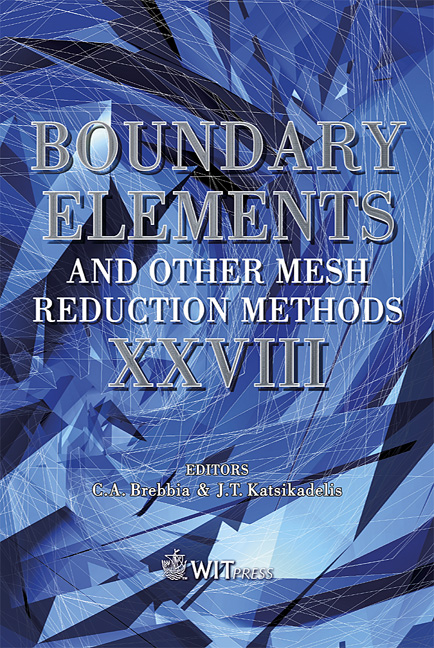A Meshfree Minimum Length Method
Price
Free (open access)
Transaction
Volume
42
Pages
9
Published
2006
Size
558 kb
Paper DOI
10.2495/BEM060081
Copyright
WIT Press
Author(s)
G. R. Liu, K. Y. Dai & X. Han
Abstract
A meshfree minimum length method (MLM) has been proposed for solids mechanics and heat conduction problems. In this method, both polynomial terms as well as modified radial basis functions (RBFs) are used to construct shape functions using arbitrarily distributed nodes based on the minimum length procedure. The shape functions constructed possess delta function property. The numerical examples show that the method achieves better accuracy than the finite element method especially for problems with steep gradients. Some numerical implementation issues for MLM are also discussed in detail. Keywords: meshfree method, meshless method, minimum length method, radial basis function (RBF), interpolation function. 1 Introduction Meshfree method has achieved remarkable progress in recent year to avoid the problems related to the creation and application of predefined meshes in the traditional numerical methods, such as the finite element method (FEM), the finite difference method (FDM). In general meshfree methods developed so far can be categorized into three main groups, i.e., meshfree methods based on strong-form formulation [1, 2], on weak-form formulation [3-6] and on the combination of the above two [7, 8]. Meshfree weak-form methods can usually achieve higher accuracy than strong-form methods especially in dealing with problems in solids and structures. In addition, they can treat Neumann boundary condition more easily and the results are more stable. Hence weak-form formulation will be used in this work. One of the most important issues in meshfree method is the construction of shape functions. There are two widely
Keywords
meshfree method, meshless method, minimum length method, radial basis function (RBF), interpolation function.





